Archives
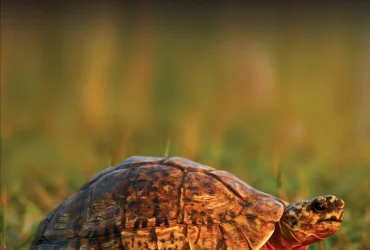 v3i1.44
v3i1.44ISSN: 1800-427X (print)
eISSN: 1800-427X (online)
DOI:10.47605/tapro.v3i1.44
Submitted date: 29 December 2010
Accepted date: 29 June 2011
Published date: 30 July 2011
Pp. 44–46.
Two rare butterfly species observed from two isolated forest patches in Kalutara District, Sri Lanka
D.M.S.S. Karunarathna*, R.G.A.T.S. Wickramarachchi, D.H.P.U. Silva & U.T.I. Abeywardena
*Corresponding author. E-mail: dmsameera@gmail.com
Butterflies are a group of charismatic insects, which forms a major component of Sri Lankan biodiversity. The total butterfly species recorded in Sri Lanka consists of 244 species and among them 20 (8.1%) are endemic to the island. Overall, 22 butterfly species are critically endangered, 29 endangered and 15 vulnerable and insufficient data are available for rating the status of 29 species. The distribution and ecology of butterflies, as well as of other insects, has been underestimated or neglected over the last few decades in Sri Lanka. Here we extend the distribution of two endangered butterflies in Sri Lanka.
Section Editor: Jeffrey Miller
eISSN: 1800-427X (online)
DOI:10.47605/tapro.v3i1.44
Submitted date: 29 December 2010
Accepted date: 29 June 2011
Published date: 30 July 2011
Pp. 44–46.
Two rare butterfly species observed from two isolated forest patches in Kalutara District, Sri Lanka
D.M.S.S. Karunarathna*, R.G.A.T.S. Wickramarachchi, D.H.P.U. Silva & U.T.I. Abeywardena
*Corresponding author. E-mail: dmsameera@gmail.com
Butterflies are a group of charismatic insects, which forms a major component of Sri Lankan biodiversity. The total butterfly species recorded in Sri Lanka consists of 244 species and among them 20 (8.1%) are endemic to the island. Overall, 22 butterfly species are critically endangered, 29 endangered and 15 vulnerable and insufficient data are available for rating the status of 29 species. The distribution and ecology of butterflies, as well as of other insects, has been underestimated or neglected over the last few decades in Sri Lanka. Here we extend the distribution of two endangered butterflies in Sri Lanka.
Section Editor: Jeffrey Miller
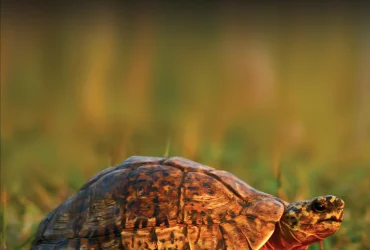 v3i1.43
v3i1.43ISSN: 1800-427X (print)
eISSN: 1800-427X (online)
DOI:10.47605/tapro.v3i1.43
Submitted date: 16 May 2011
Accepted date: 24 June 2011
Published date: 30 July 2011
Pp. 42–43.
Additions to black mildews of India
V.B. Hosagoudar*, Jacob Thomas & D.K. Agarwal
*Corresponding author. E-mail: vbhosagoudar@rediffmail.com
Kerala is located in the south-west corner of peninsular India and towards the western side of the southern Western Ghats, harbouring rich vegetation. It is a treasure of biological wealth and it needs the specialized personalities to identify and name them. Senior author is being engaged in the study of this never completing treasure of microfungal wealth of Kerala state since three decades. This paper gives an account of four taxa, hitherto unrecorded from India, belonging to the genera Asterina and Meliola, namely, Asterina garciniicola, Meliola abrupta, Meliola bakeri and Meliola hugoniae are described and illustrated.
Section Editor: R.K. Verma
eISSN: 1800-427X (online)
DOI:10.47605/tapro.v3i1.43
Submitted date: 16 May 2011
Accepted date: 24 June 2011
Published date: 30 July 2011
Pp. 42–43.
Additions to black mildews of India
V.B. Hosagoudar*, Jacob Thomas & D.K. Agarwal
*Corresponding author. E-mail: vbhosagoudar@rediffmail.com
Kerala is located in the south-west corner of peninsular India and towards the western side of the southern Western Ghats, harbouring rich vegetation. It is a treasure of biological wealth and it needs the specialized personalities to identify and name them. Senior author is being engaged in the study of this never completing treasure of microfungal wealth of Kerala state since three decades. This paper gives an account of four taxa, hitherto unrecorded from India, belonging to the genera Asterina and Meliola, namely, Asterina garciniicola, Meliola abrupta, Meliola bakeri and Meliola hugoniae are described and illustrated.
Section Editor: R.K. Verma
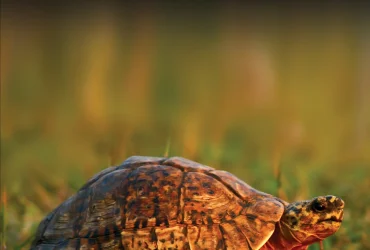 v3i1.42
v3i1.42ISSN: 1800-427X (print)
eISSN: 1800-427X (online)
DOI:10.47605/tapro.v3i1.42
Submitted date: 28 June 2011
Accepted date: 29 July 2011
Published date: 30 July 2011
Pp. 38–41.
MUGGER CROCODILE (Crocodylus palustris Lesson, 1831) PREYS ON A RADIATED TORTOISE IN SRI LANKA
Mahesh C. De Silva, A.A. Thasun Amarasinghe, Anslem de Silva & D. M. S. Suranjan Karunarathna*
*Corresponding author. E-mail: dmsameera@gmail.com
Abstract
The Mugger crocodile is the second largest crocodile in Sri Lanka. Recently we observed a Mugger attacking an unidentified radiated tortoise. The body morphology and colouration of this particular tortoise appeared different to the native Star tortoise widely distributed in the country. Thus, the possibility of an escaped or released exotic pet is discussed.
Key words : Sri Lanka, Crocodylus palustris, Geochelone elegans, Stigmochelys pardalis, feeding
Section Editor: John Rudge
eISSN: 1800-427X (online)
DOI:10.47605/tapro.v3i1.42
Submitted date: 28 June 2011
Accepted date: 29 July 2011
Published date: 30 July 2011
Pp. 38–41.
MUGGER CROCODILE (Crocodylus palustris Lesson, 1831) PREYS ON A RADIATED TORTOISE IN SRI LANKA
Mahesh C. De Silva, A.A. Thasun Amarasinghe, Anslem de Silva & D. M. S. Suranjan Karunarathna*
*Corresponding author. E-mail: dmsameera@gmail.com
Abstract
The Mugger crocodile is the second largest crocodile in Sri Lanka. Recently we observed a Mugger attacking an unidentified radiated tortoise. The body morphology and colouration of this particular tortoise appeared different to the native Star tortoise widely distributed in the country. Thus, the possibility of an escaped or released exotic pet is discussed.
Key words : Sri Lanka, Crocodylus palustris, Geochelone elegans, Stigmochelys pardalis, feeding
Section Editor: John Rudge
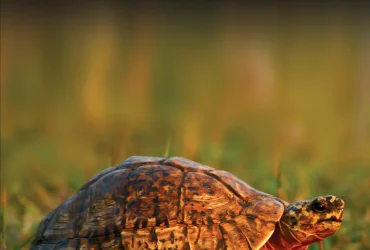 v3.i1.41
v3.i1.41ISSN: 1800-427X (print)
eISSN: 1800-427X (online)
DOI:10.47605/tapro.v3i1.41
Submitted date: 07 June 2011
Accepted date: 13 July 2011
Published date: 30 July 2011
Pp. 31–37.
REPRODUCTION AND SEXUAL DICHROMATISM IN Sitana ponticeriana (REPTILIA: DRACONINAE: AGAMIDAE)
Arttatrana Pal*, Mitali Madhusmita Swain & Swapnananda Rath
*Corresponding author. E-mail: gprszsipatna@rediffmail.com
Abstract
This paper presents the results of a two-year study of the sexual dichromatism, breeding, clutch size and development in a population of Sitana ponticeriana, conducted at Balukhand-Konark Wildlife Sanctuary, Orissa, India. Sexual dimorphism appears as a brighter overall colouration with red and dark blue gular pouch develops as outward projection at the neck. In the breeding season, mature males have crimson-red or brick-red colour at the base of the tail. Lizards start courtship in the early morning and afternoon, depending on the ambient temperature, during the early monsoons. Vitellogenic and gravid females occur simultaneously in early and mid-summer, and lay eggs during the onset of rains. Potentially, 2-3 clutches of 6- 23 eggs (mean 17.39 ± 4.39 eggs/clutch) are produced by each female each year. The smallest gravid female contained more eggs than larger ones. Eggs collected late in the reproductive season were significantly larger than those collected earlier. Freshly laid eggs are elliptical; during development, the shape, size and volume of the eggs were changed; hatchling success observed after 39 days of incubation.
Key words : ambient temperature, clutch size, development, Fan-throated lizard, India
Section Editor: Indraneil Das
eISSN: 1800-427X (online)
DOI:10.47605/tapro.v3i1.41
Submitted date: 07 June 2011
Accepted date: 13 July 2011
Published date: 30 July 2011
Pp. 31–37.
REPRODUCTION AND SEXUAL DICHROMATISM IN Sitana ponticeriana (REPTILIA: DRACONINAE: AGAMIDAE)
Arttatrana Pal*, Mitali Madhusmita Swain & Swapnananda Rath
*Corresponding author. E-mail: gprszsipatna@rediffmail.com
Abstract
This paper presents the results of a two-year study of the sexual dichromatism, breeding, clutch size and development in a population of Sitana ponticeriana, conducted at Balukhand-Konark Wildlife Sanctuary, Orissa, India. Sexual dimorphism appears as a brighter overall colouration with red and dark blue gular pouch develops as outward projection at the neck. In the breeding season, mature males have crimson-red or brick-red colour at the base of the tail. Lizards start courtship in the early morning and afternoon, depending on the ambient temperature, during the early monsoons. Vitellogenic and gravid females occur simultaneously in early and mid-summer, and lay eggs during the onset of rains. Potentially, 2-3 clutches of 6- 23 eggs (mean 17.39 ± 4.39 eggs/clutch) are produced by each female each year. The smallest gravid female contained more eggs than larger ones. Eggs collected late in the reproductive season were significantly larger than those collected earlier. Freshly laid eggs are elliptical; during development, the shape, size and volume of the eggs were changed; hatchling success observed after 39 days of incubation.
Key words : ambient temperature, clutch size, development, Fan-throated lizard, India
Section Editor: Indraneil Das
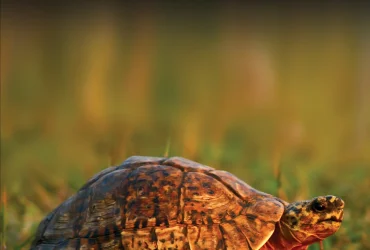 v3i1.40
v3i1.40ISSN: 1800-427X (print)
eISSN: 1800-427X (online)
DOI:10.47605/tapro.v3i1.40
Submitted date: 28 February 2011
Accepted date: 13 July 2011
Published date: 30 July 2011
Pp. 18–30.
BENTHIC MACRO-INVERTEBRATE FAUNA AND “MARINE ELEMENTS” SENSU ANNANDALE (1922) HIGHLIGHT THE VALUABLE DOLPHIN HABITAT OF RIVER GANGA IN BIHAR - INDIA
Hasko Nesemann, Gopal Sharma* & Ravindra K. Sinha
*Corresponding author. E-mail: gprszsipatna@rediffmail.com
Abstract
From the main channel of River Ganga 95 invertebrate taxa have been recorded in the endangered Gangetic Dolphin (Platanista gangetica) habitat over an observation period of ten years. Mollusks, Annelids and Arthropods are the dominating benthic groups that constitute the detritivores, filter-feeders and sediment feeders, scrapers/grazers and herbivores. The benthic sediment fauna is rich in diversity and high in abundance. This enables carnivores to occupy a large variety of specialized ecological niches. The qualitative faunal composition of Ganga resembles in general large European rivers with similar representation of taxa. Twelve taxa of marine-originated families were identified, but none of them can be classified as invasive or non-indigenous species. Only two taxa are certainly recognized as non-indigenous neozoans, whereas the remaining fauna shows pristine and stable ecological conditions. In this aspect River Ganga differs from regulated large rivers, where faunal change has largely replaced the original species inventory. Despite the heavy pollution in parts of the river, the original composition of biological diversity is still persisting in the middle reaches of the Ganga. This provides hope for the survival of the Gangetic Dolphin.
Key words : Aquatic, invasive species, functional feeding groups, Gangetic Dolphin
Section Editor: Remadevi
eISSN: 1800-427X (online)
DOI:10.47605/tapro.v3i1.40
Submitted date: 28 February 2011
Accepted date: 13 July 2011
Published date: 30 July 2011
Pp. 18–30.
BENTHIC MACRO-INVERTEBRATE FAUNA AND “MARINE ELEMENTS” SENSU ANNANDALE (1922) HIGHLIGHT THE VALUABLE DOLPHIN HABITAT OF RIVER GANGA IN BIHAR - INDIA
Hasko Nesemann, Gopal Sharma* & Ravindra K. Sinha
*Corresponding author. E-mail: gprszsipatna@rediffmail.com
Abstract
From the main channel of River Ganga 95 invertebrate taxa have been recorded in the endangered Gangetic Dolphin (Platanista gangetica) habitat over an observation period of ten years. Mollusks, Annelids and Arthropods are the dominating benthic groups that constitute the detritivores, filter-feeders and sediment feeders, scrapers/grazers and herbivores. The benthic sediment fauna is rich in diversity and high in abundance. This enables carnivores to occupy a large variety of specialized ecological niches. The qualitative faunal composition of Ganga resembles in general large European rivers with similar representation of taxa. Twelve taxa of marine-originated families were identified, but none of them can be classified as invasive or non-indigenous species. Only two taxa are certainly recognized as non-indigenous neozoans, whereas the remaining fauna shows pristine and stable ecological conditions. In this aspect River Ganga differs from regulated large rivers, where faunal change has largely replaced the original species inventory. Despite the heavy pollution in parts of the river, the original composition of biological diversity is still persisting in the middle reaches of the Ganga. This provides hope for the survival of the Gangetic Dolphin.
Key words : Aquatic, invasive species, functional feeding groups, Gangetic Dolphin
Section Editor: Remadevi
Hubungi Kami
The ultimate aim of the journal is to provide an effective medium for communication of the latest and best scientific information.
Copyright © 2020 Taprobanica. All Rights Reserved
Jasa Pembuatan Website by IKT




